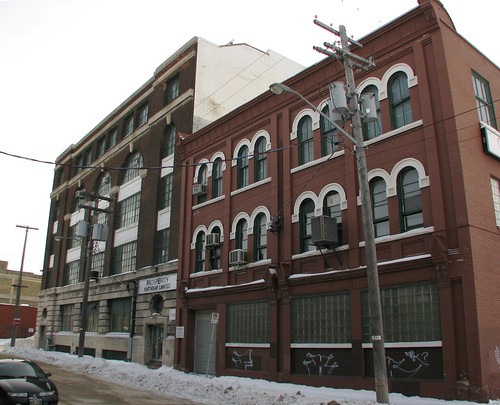 Project: Smart Bag Block / Sport for Life Centre (website)
Project: Smart Bag Block / Sport for Life Centre (website)Address: 145 Pacific Avenue (Map)
Status: In Process
Size: 29,000 sq ft
Cost: $17m (phase I)
Background (updated December 2014)
Top: ca 1891, originally two storeys (Source p.27)
Bottom: Winnipeg Tribune, January 4, 1904
The Smart Bag Company complex at 145 Pacific was built in three phases. The original two storey portion dated back to 1884 and may originally have been called the Aikins' Building. The architect was Charles Wheeler and the contractors were Kelly Bros.
It was home to George Woods Wholesale Co., until he built a larger premises in the Exchange District in the 1890s. It then became home to the Winnipeg Bag Works, which in the early 1900s was taken over by Toronto-based John Dick Company. In 1906 the Montreal-based Smart Bag Co., founded by Charles Smart, took over the assets of John Dick Company, including the Winnipeg factory.
Smart Bag specialized in the production of industrial burlap, jute and cotton bags for the packaging of grains, flour, sugar, coal etc.. They also produced padding, twine and rope.
1907 Henderson Directory
Weeks after the takeover, Smart Bag announced that they were expanding the Winnipeg facility. They hired architect Daniel Smith of Fort Street to design an addition that stretched the building back to Pacific Avenue and added a third floor. Peter Lyall and Son won the $30,000 construction bid.
Bag manufacturing wasn't a particularly newsworthy industry so the company rarely advertized and was seldom mentioned in the newspapers. Aside from a couple of small fires that damaged stock, there were no major incidents involving the building.
February 6, 1913, Winnipeg Free Press
Designed by Woodman and Carey, who also designed the Paris Building, the construction contract was awarded to G. H Archibald Co.in January 1913 and by mid February construction had already begun.
The building, four storeys plus a basement, measures 147 x 98 feet and fronts Lily Street, Alexander Avenue and Pacific Avenue. It is connected to the original building on each floor.
An important design element were the large windows on all sides of the building, which allowed for a maximum amount of natural light and fresh air movement. It was also fireproof, which was important for a bag factory, using concrete even for the floors and stairs. The basement housed the mechanical area and toilets, offies and shipping / receiving were on the main floor and the upper three storeys were for manufacturing.
By August, work was in the finishing stages. Classified ads appeared looking for concrete finishers for the floors and staircases.
One man who worked at the site was a recent Russian immigrant, Aaron Vobich of Manitoba Avenue. He was working on an upper floor and wanted to head downstairs. One of the freight elevators was passing by, presumably the safety gates had not been installed yet, and he tried to leap into it. His timing was off and his body was caught between the lip of the building's floor and the roof of the elevator car. Passengers stopped the car, but it was too late. He had, as the Tribune put it, "sustained injuries of a fearful nature" and died shortly after arriving at General Hospital.
90th Winnipeg Rifles Program p. 92 (source)
Soon after the new building opened, World War I was declared. At headquarters in Montreal, company president Charles A. Smart served in France as a brigadier general and vice president J. W. Woods was also a general. Smart's nephew, W. V. Smart, who came to Winnipeg from Montreal to manage the local factory, enlisted with the 183rd Battalion as a lieutenant.
By 1916, there were four local employees serving. John Robert Ivers, a shipper, appears to be the only one killed in action.
Top: December 30, 1940, Winnipeg Tribune
Bottom: Christ Church souvenir program (source)
By 1920, the company was known as Woods Manufacturing, still specializing in bags, now including paper. They rented out the original section of the building, tenants included Globelite Batteries and a number of garment manufacturers.
In late 1985 the Tang family of Hong Kong, fronted by Henry and Manning Tang, spent nearly $2 million to import 11 computerized knitting machines and established Prosperity Knitwear. Initially, the company manufactured sweaters and business boomed. By the 1990s they had purchased both buildings and employed 125 people. They also branched out into crest embroidery, jackets and fleece wear.
January 2, 2009, Winnipeg Free Press
An economic downturn in the mid 2000s saw the factory close and in 2008 the buildings were put on the market for nearly $5 million. It was expected that they would be sold for condominium conversion, instead Sport Manitoba, which had to vacate its offices at 200 Main Street by 2010, was interested, but only wanted the newer structure and the land under the older one.
Henry Tang appeared before the city to ask that the building's heritage status be removed to make way for its demolition. That led to a protracted fight over the fate of the 1884 structure.
Sport Manitoba's proposal called for a two-phase development. The first would see the 1913 building turned into a new Sport Manitoba office building, sports therapy centre and home to the Manitoba Sports Hall of Fame and Museum. The second phase, to commence when money had been raised, would be an athletic field house with a gymnasium and track.
In the end, Sport Manitoba purchased the complex from Tang and were granted a demolition permit in Spring 2010. It was based on a number of factors, including an engineer's report showing that the building had structural faults, the design plan for the new facility submitted to the city by Sport Manitoba and on the condition that the site would not be used as surface parking.
The building was demolished in 2010 and soon after became a surface parking lot. The city tried to enforce their order about the lot in 2013 but Sport Manitoba said that because they were starting construction in Fall 2014, that they should not have to make improvements to the site. As of January 2015 it is still a surface parking lot. Sport Manitoba hopes to build a field house in time for the 2017 Canada Summer Games.
Related:
My Flickr album of the Smart Bag / Sport Manitoba Building
All together now Winnipeg Free Press (Mar. 2009)
Sports to the Rescue Winnipeg Sun (Jan. 2009)
Sport Manitoba Press Release (Mar. 2009)
145 Pacific Avenue City of Winnipeg Historic Buildings Report
145 Pacific Avenue U of M Winnipeg Buildings Index
Update:





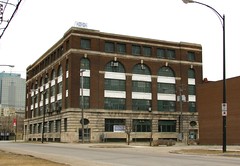






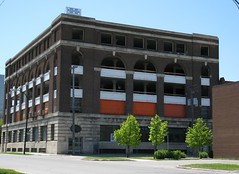
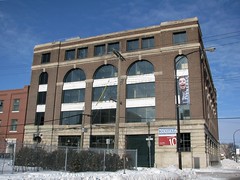
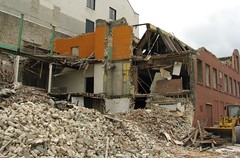
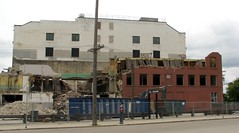
مواصفات شركة نقل عفش:
ReplyDelete1. خبرة عالية في مجال نقل العفش.
2. فريق عمل محترف ومدرب على أعلى مستوى.
3. استخدام أحدث التقنيات والأدوات لضمان سلامة العفش أثناء النقل.
4. توفير خدمة التغليف والتعبئة للعفش بشكل آمن ومناسب.
5. توفير خدمة التفكيك والتركيب للعفش بشكل احترافي.
رولات الاسترتش الصناعي، المعروفة أيضًا بأفلام التمدد أو الفيلم الاسترتش، تستخدم على نطاق واسع في صناعة تغليف الأطعمة. إليك بعض المميزات الرئيسية لرولات الاسترتش الصناعي في تغليف الأطعمة:
ReplyDeleteتمدد وتلاصق ممتازين: تتميز رولات استرتش صناعي بقدرتها على التمدد بشكل ممتاز وتلاصقها الجيد، مما يتيح تغليف الأطعمة بشكل فعال وتأمينها بشكل جيد.
حماية من التلوث والرطوبة: يوفر الاسترتش الصناعي حماية فعالة ضد التلوث ويحافظ على رطوبة الطعام، مما يسهم في الحفاظ على جودته ومدة صلاحيته.